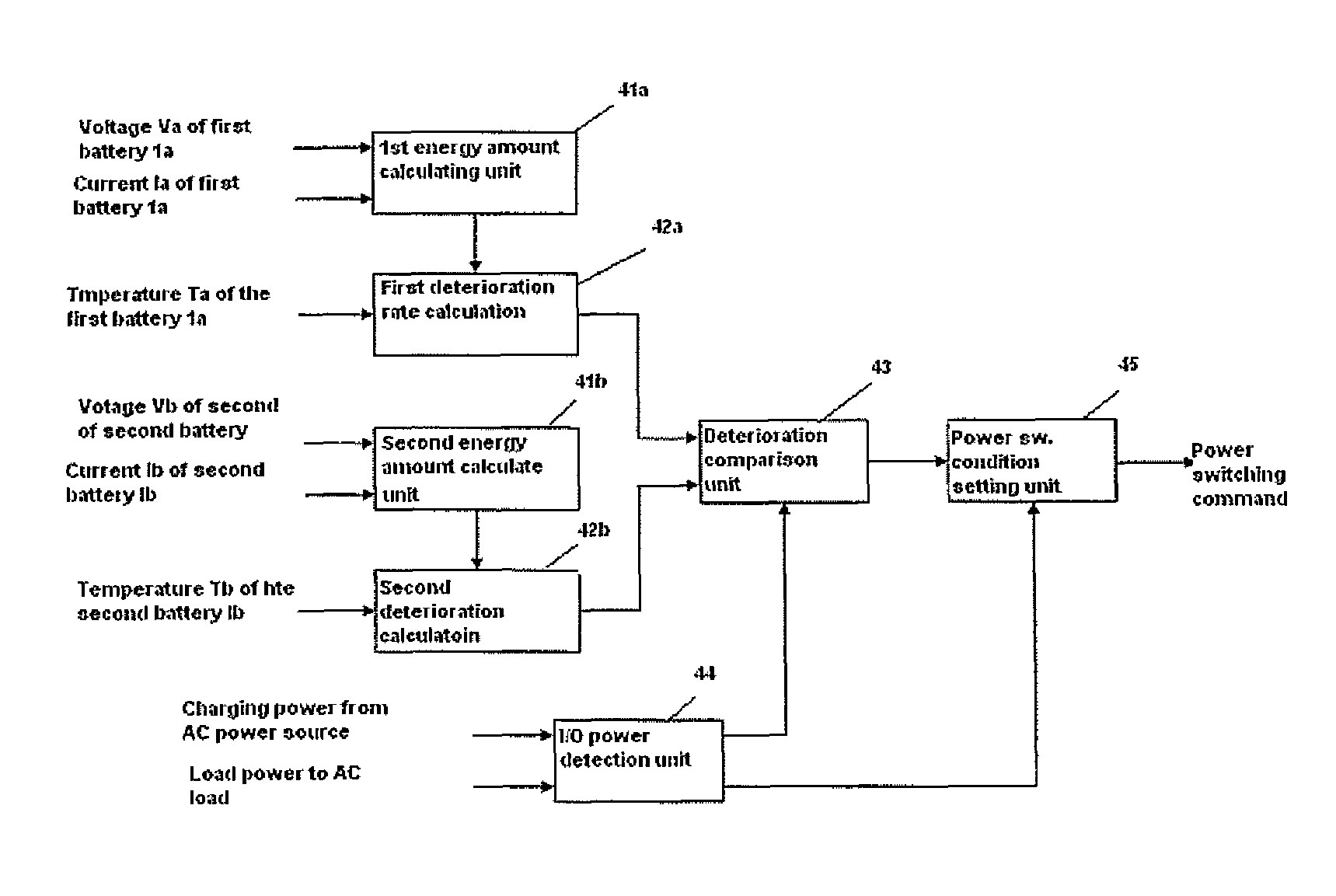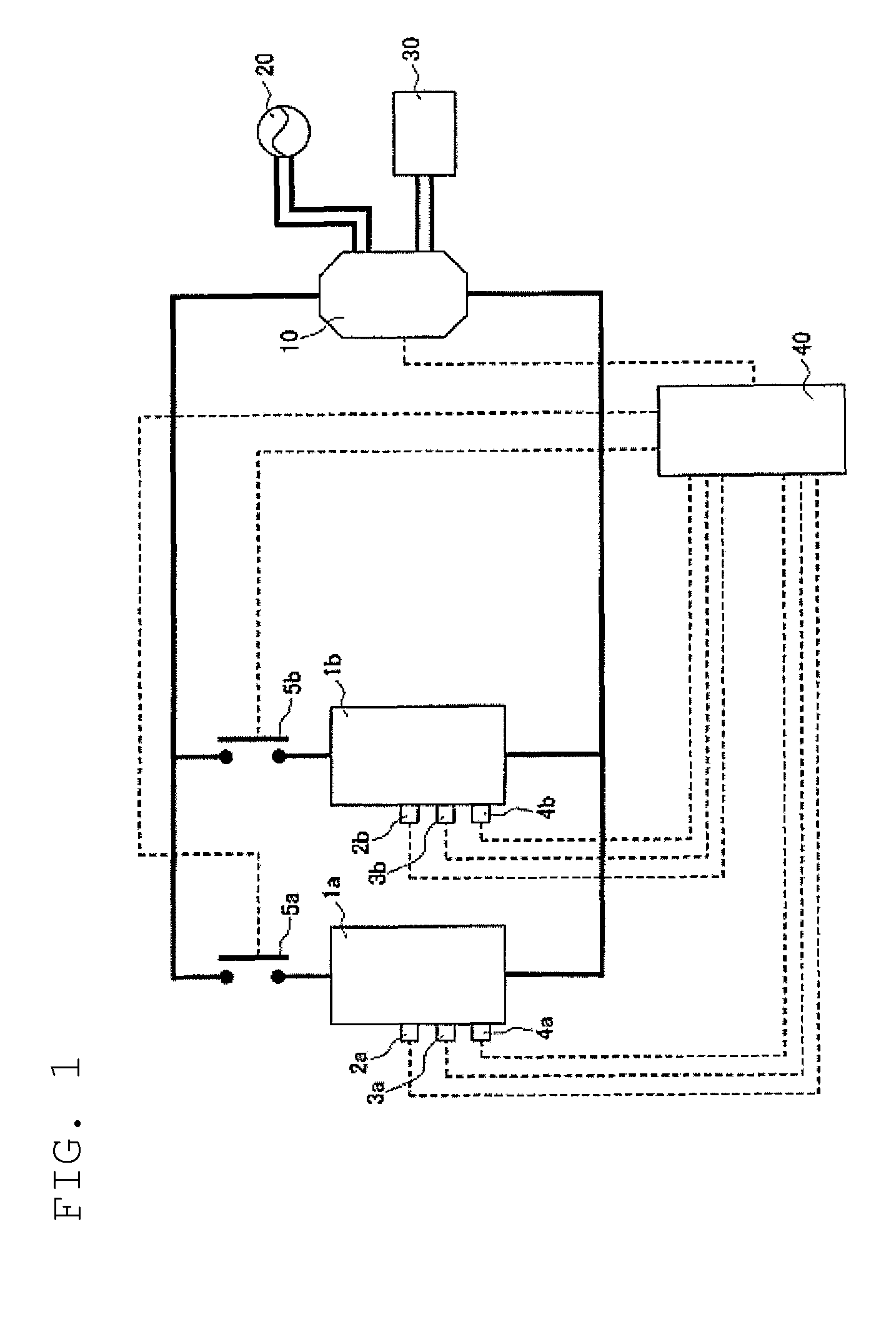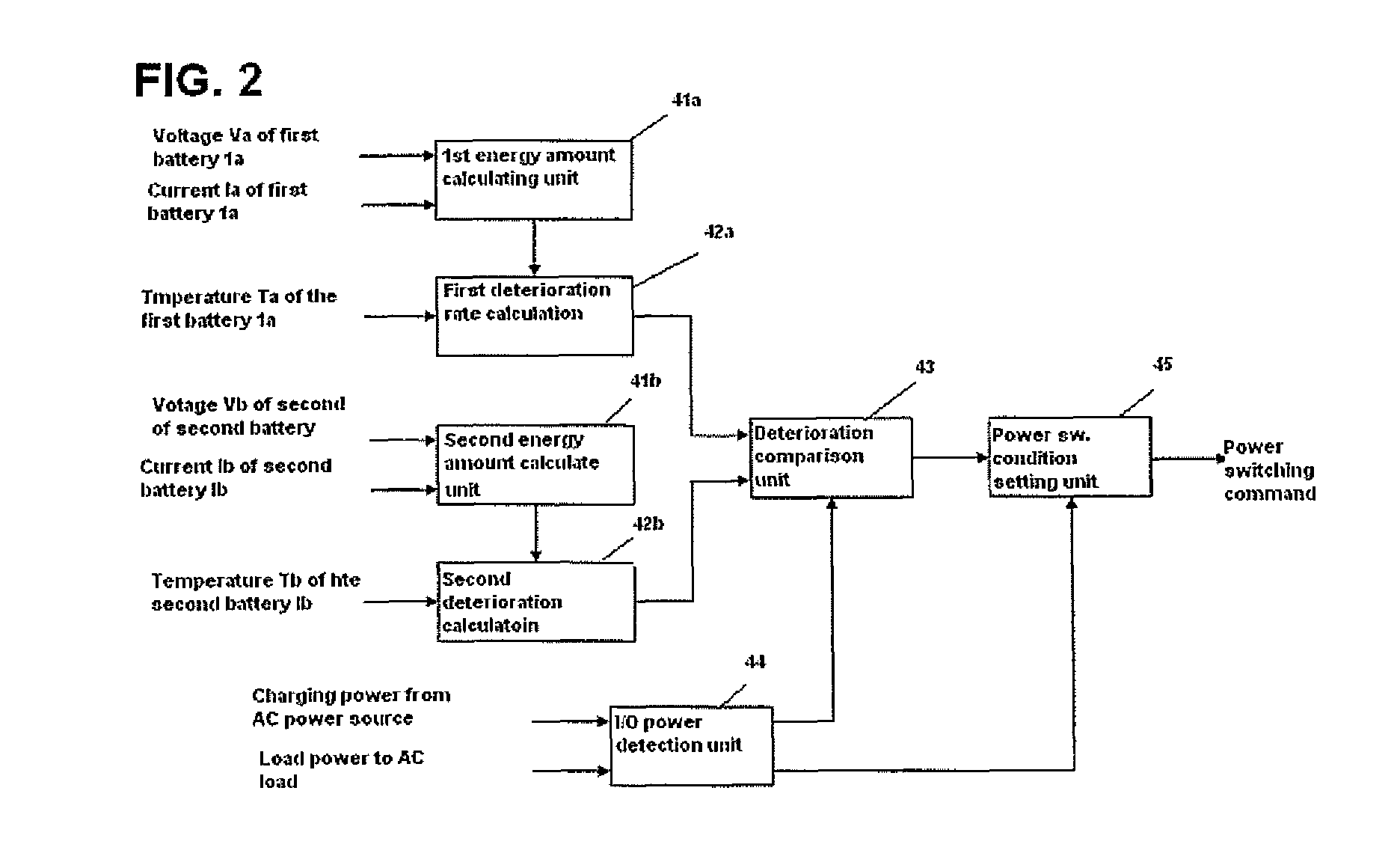Control device to control deterioration of batteries in a battery stack
a control device and battery technology, applied in secondary cells servicing/maintenance, instruments, electrochemical generators, etc., can solve the problems of short lifetime of stationary battery systems, insufficient resolution of variations in deterioration between batteries, etc., to achieve the effect of suppressing variations in deterioration rates and improving the lifetime of storage battery systems
- Summary
- Abstract
- Description
- Claims
- Application Information
AI Technical Summary
Benefits of technology
Problems solved by technology
Method used
Image
Examples
Embodiment Construction
[0016]An embodiment according to the present invention will now be described below with reference to the accompanying drawings.
[0017]FIG. 1 is a block diagram showing a storage battery system according to the present embodiment. Although the battery system in the present embodiment is explained as applied to an example of stationary storage battery system, no particular limitation is present to this example.
[0018]As shown in FIG. 1, the storage battery system in the present embodiment is provided with a first storage battery 1a, second storage battery 1b, a converter 10, an AC power source 20, an AC load 30, and a controller 40. The first storage battery 1a and the second storage battery 1b are connected to each other in parallel through the power line, and are further connected to a converter 10. Further, the first storage battery 1a and the second storage battery 1b can receive via the converter 10 power from AC power source 20. Note that, in FIG. 1, the bold solid line indicates ...
PUM
| Property | Measurement | Unit |
|---|---|---|
| temperature | aaaaa | aaaaa |
| energy | aaaaa | aaaaa |
| power | aaaaa | aaaaa |
Abstract
Description
Claims
Application Information
 Login to View More
Login to View More - R&D
- Intellectual Property
- Life Sciences
- Materials
- Tech Scout
- Unparalleled Data Quality
- Higher Quality Content
- 60% Fewer Hallucinations
Browse by: Latest US Patents, China's latest patents, Technical Efficacy Thesaurus, Application Domain, Technology Topic, Popular Technical Reports.
© 2025 PatSnap. All rights reserved.Legal|Privacy policy|Modern Slavery Act Transparency Statement|Sitemap|About US| Contact US: help@patsnap.com



